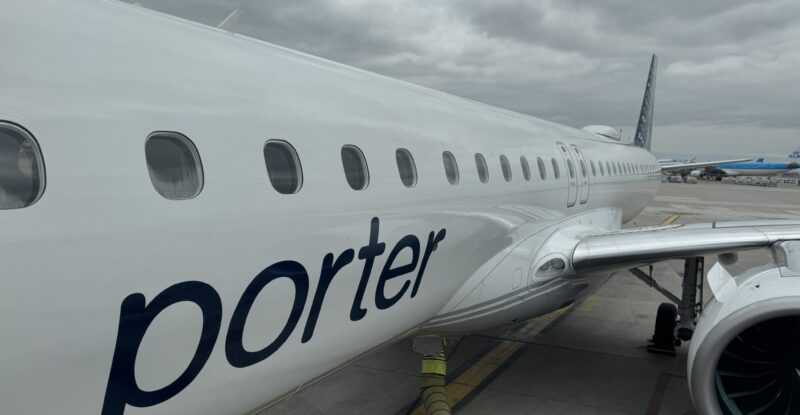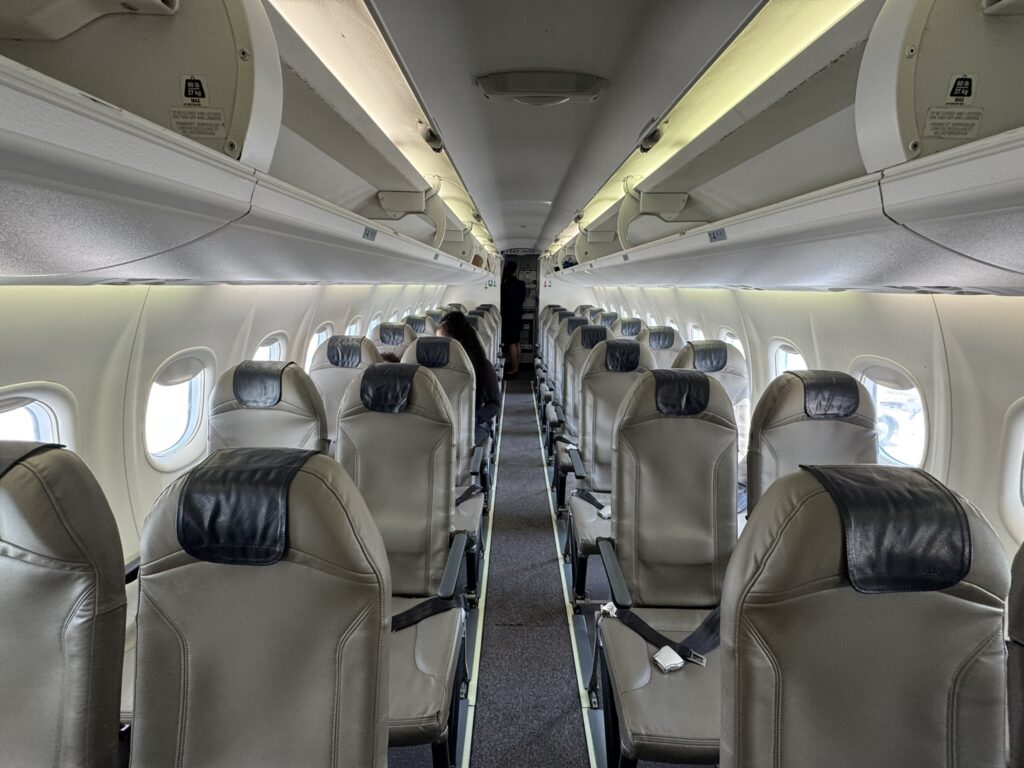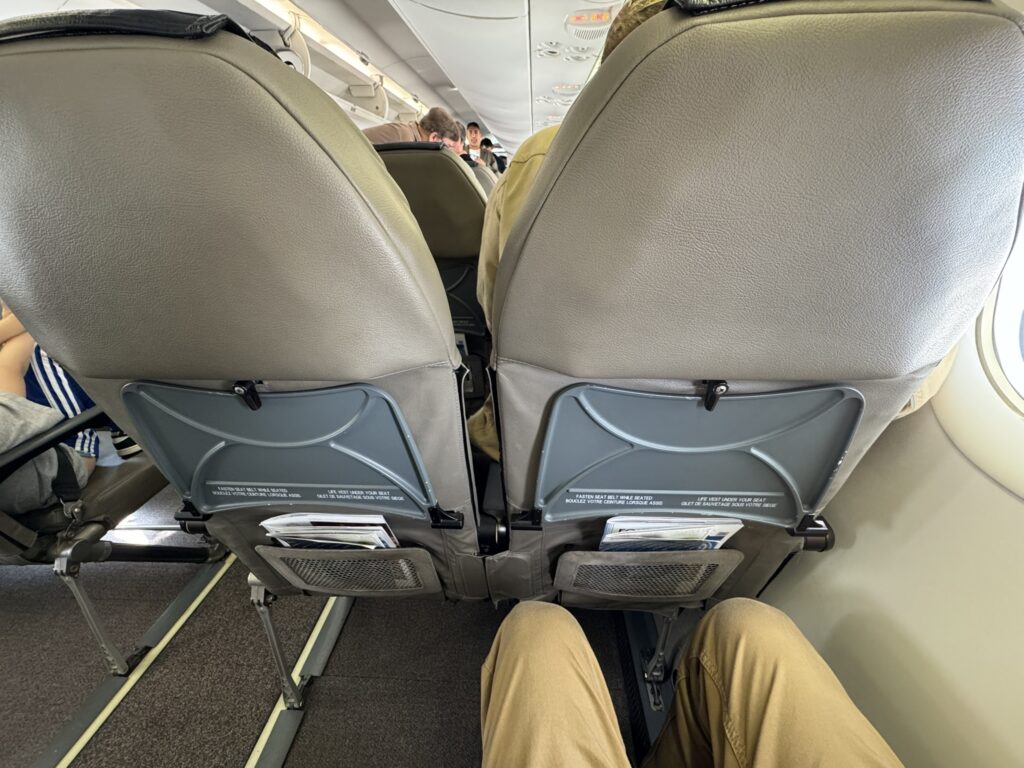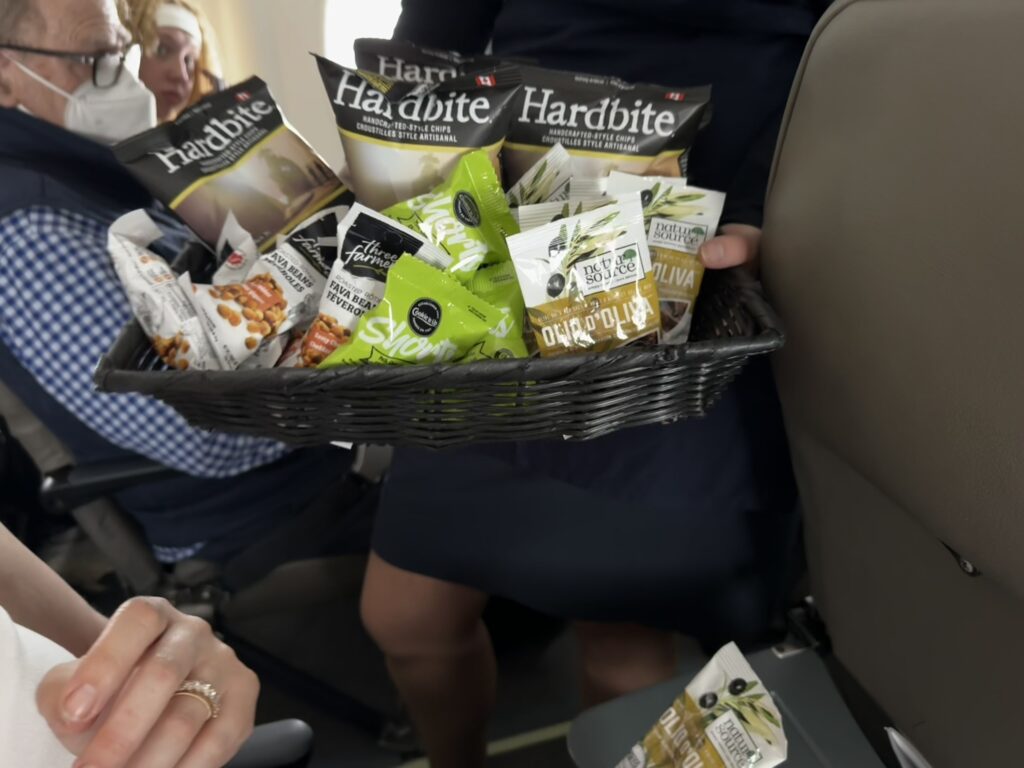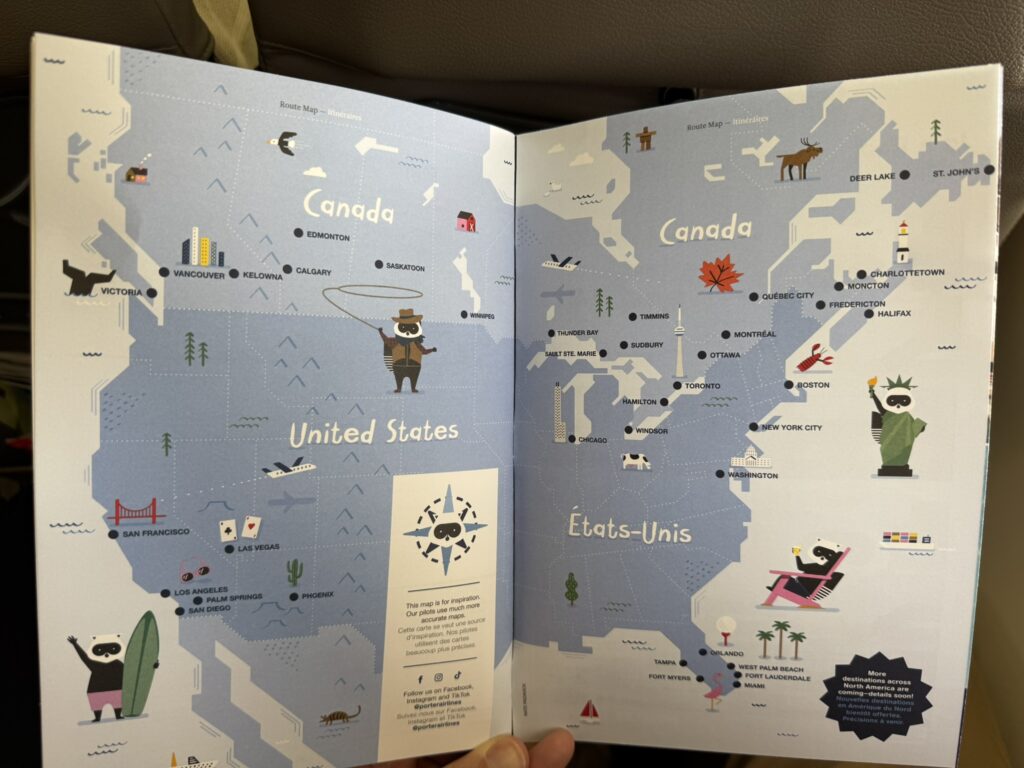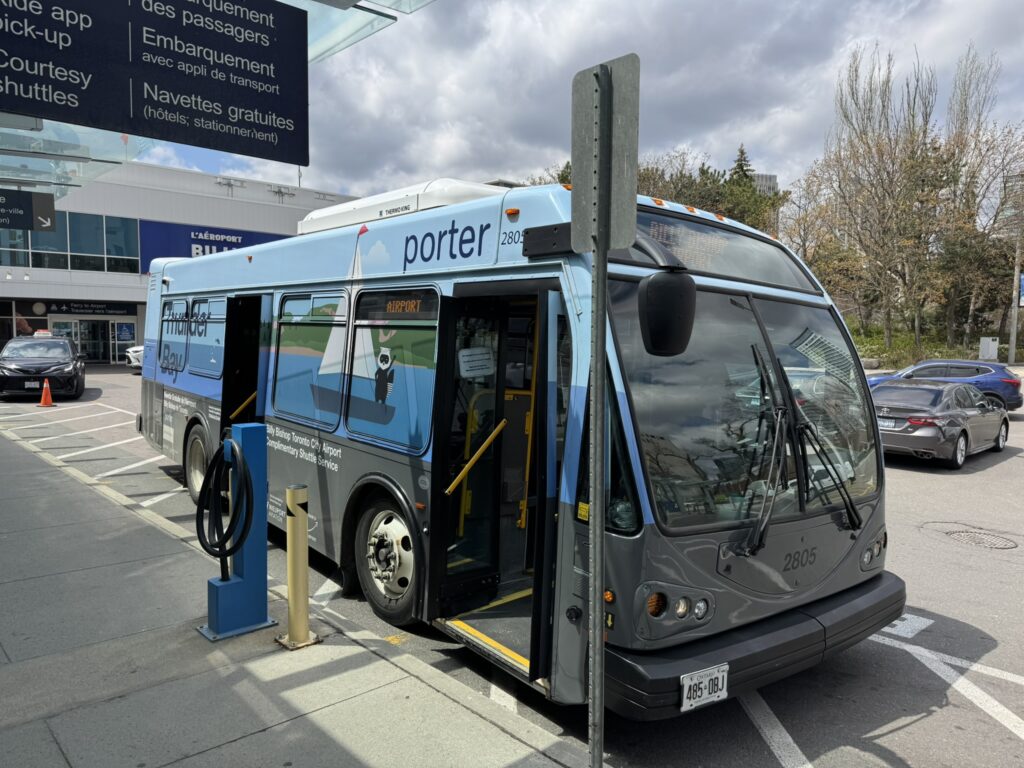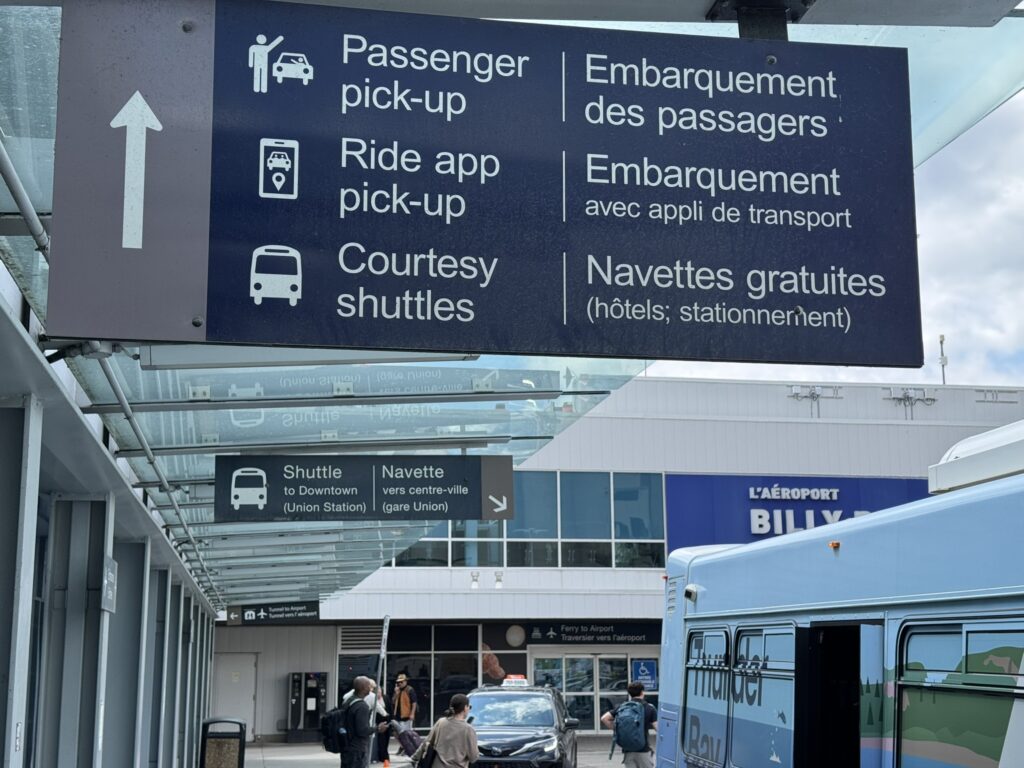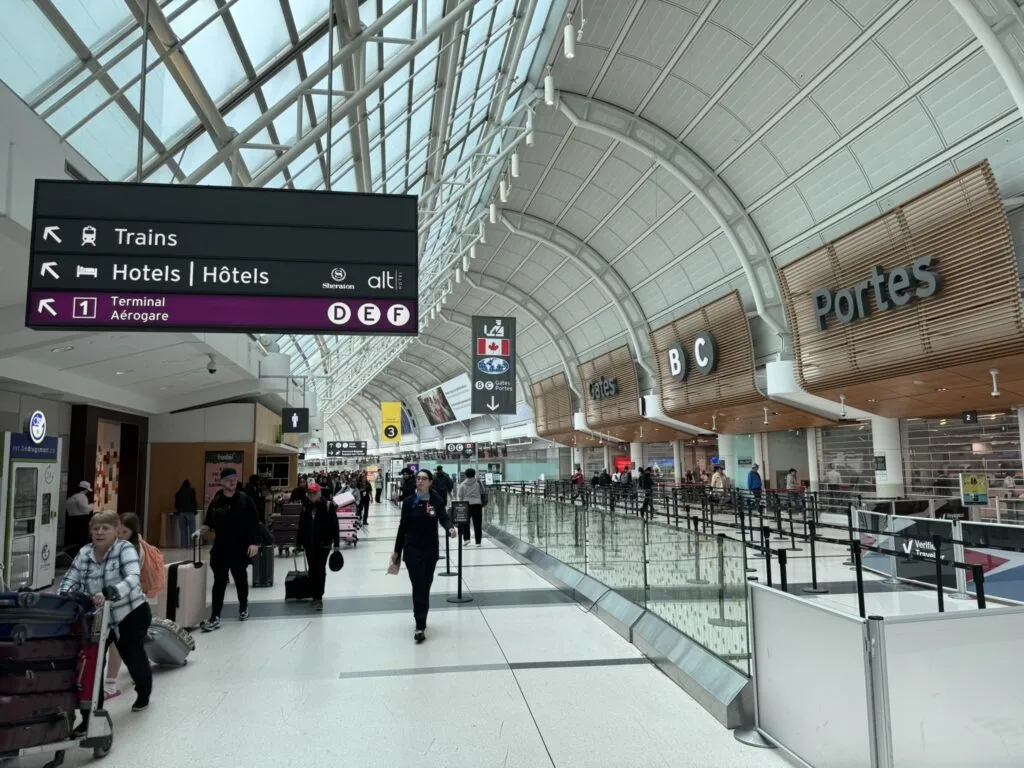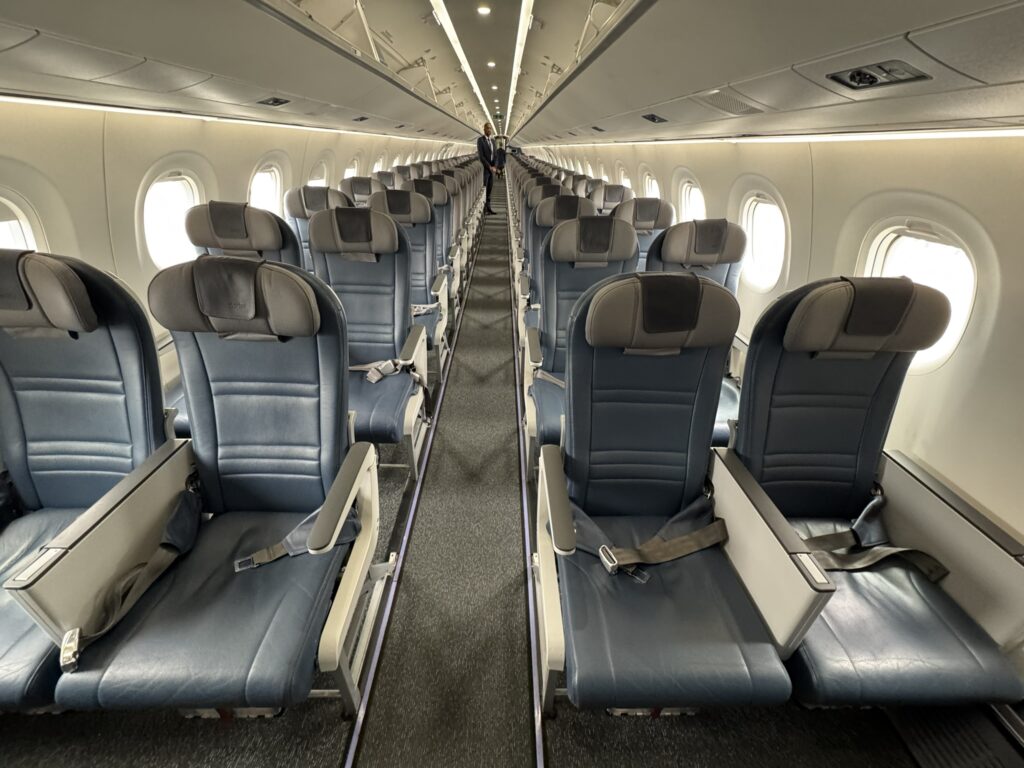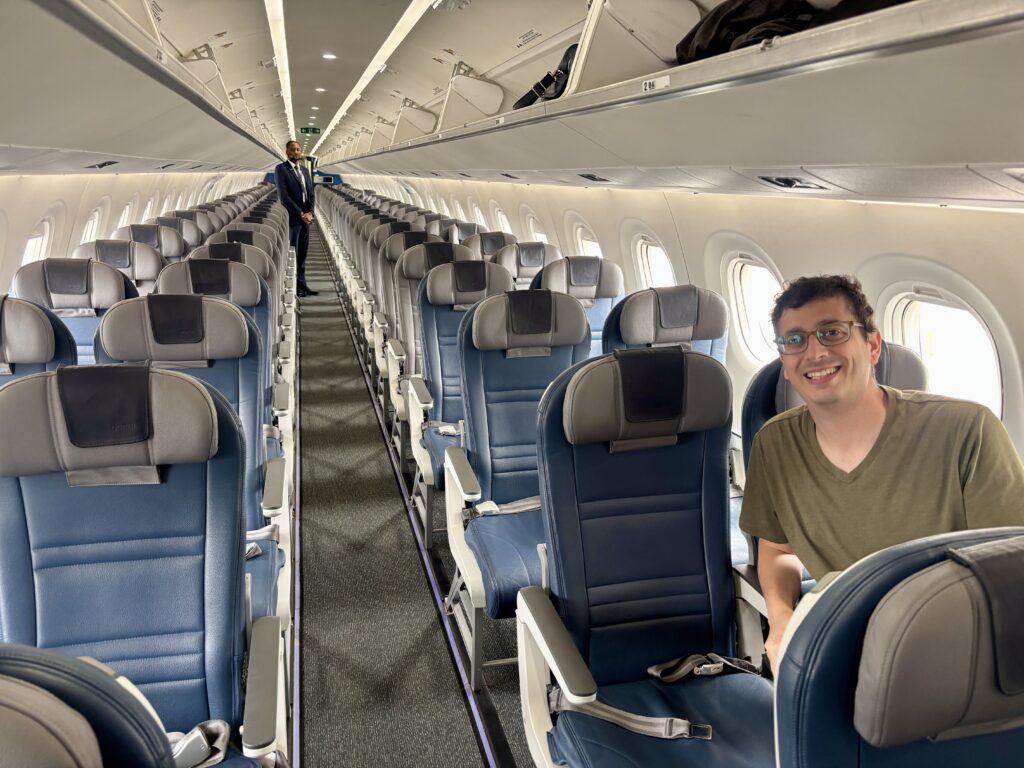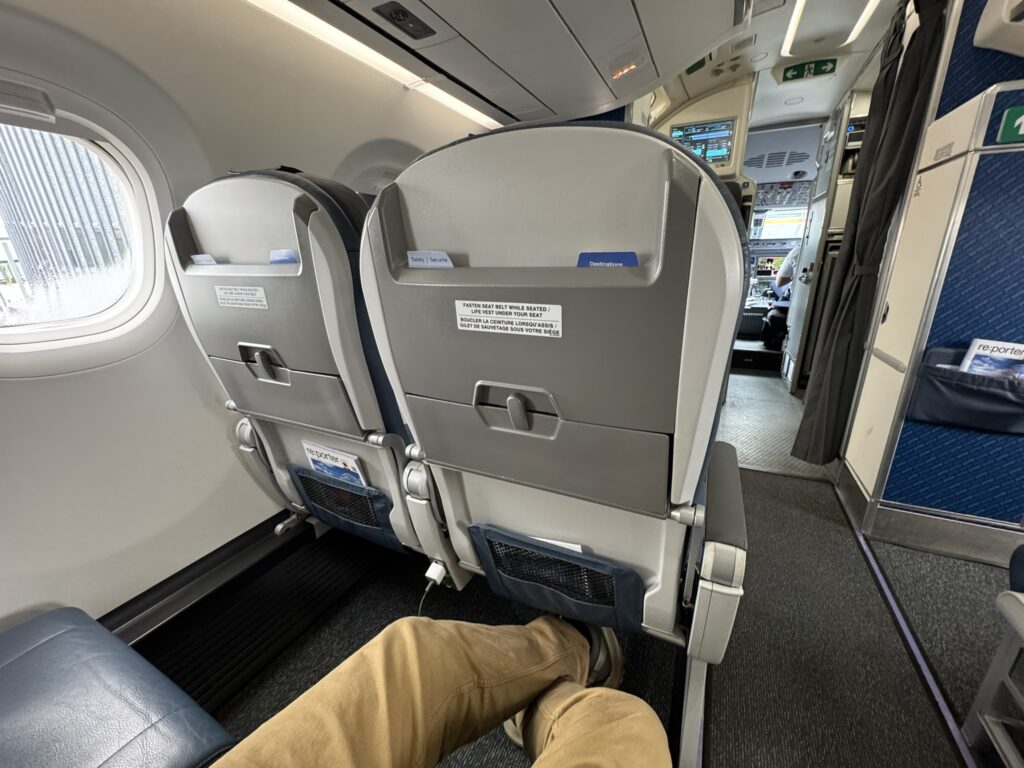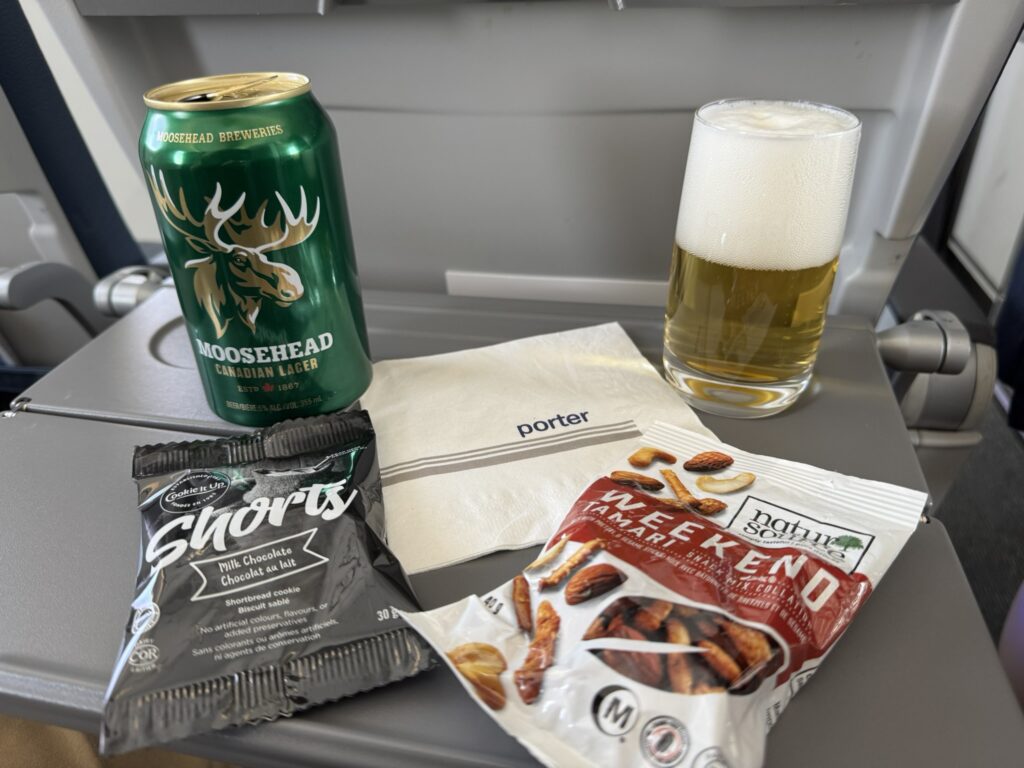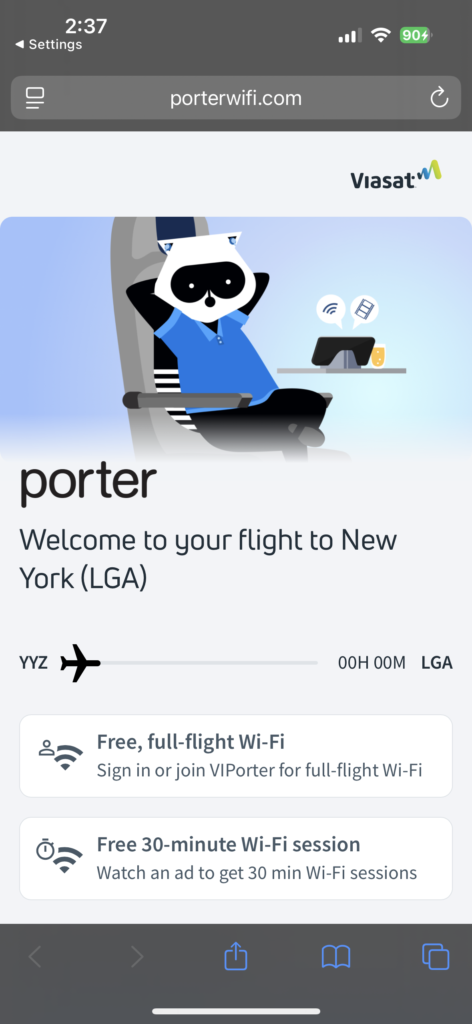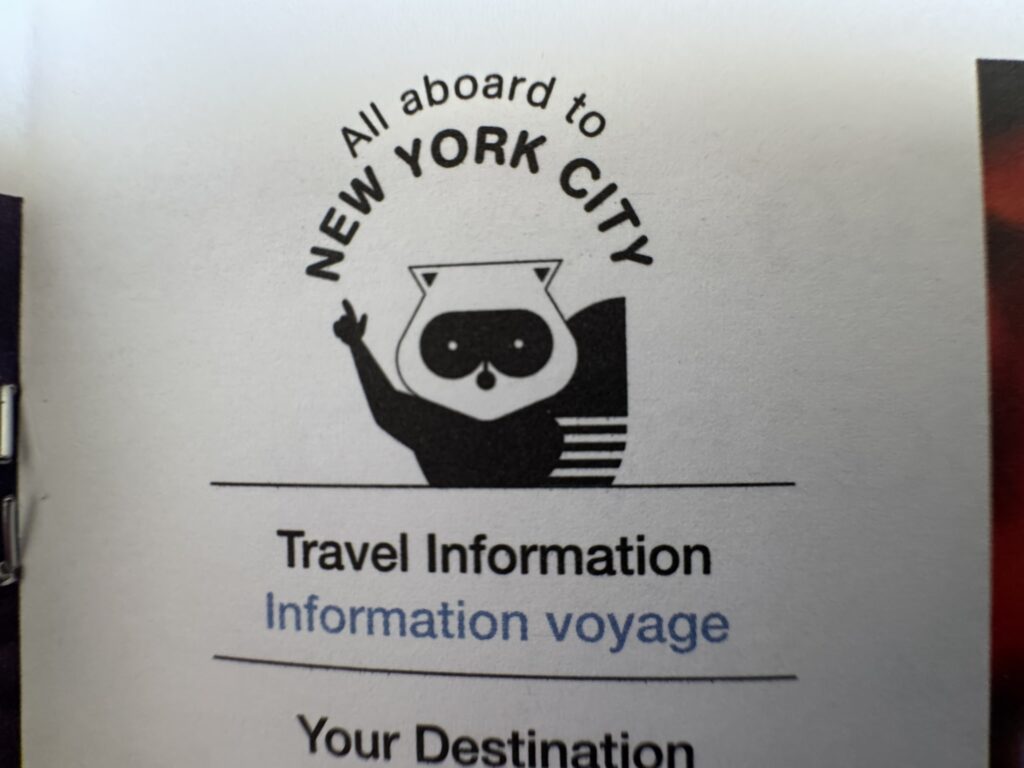 For many years I have been a fan of Canada’s Porter Airlines, specifically the fun branding and wide ranging use of its cartoon raccoon mascot Mr. Porter. As Porter grew from its Bombardier Q400 turboprop beginnings and began operating larger Embraer E195-E2 twinjets, I was excited to finally get the chance to fly with Mr. Porter days after the airline launched a new route to New York LaGuardia.
For many years I have been a fan of Canada’s Porter Airlines, specifically the fun branding and wide ranging use of its cartoon raccoon mascot Mr. Porter. As Porter grew from its Bombardier Q400 turboprop beginnings and began operating larger Embraer E195-E2 twinjets, I was excited to finally get the chance to fly with Mr. Porter days after the airline launched a new route to New York LaGuardia.
First, however, I needed to fly Porter’s traditional Q400 experience to get a sense of the airline’s roots. I opted to originate at Washington Dulles, where Porter’s somewhat basic iOS app issued a mobile boarding pass and I went straight to the gate.
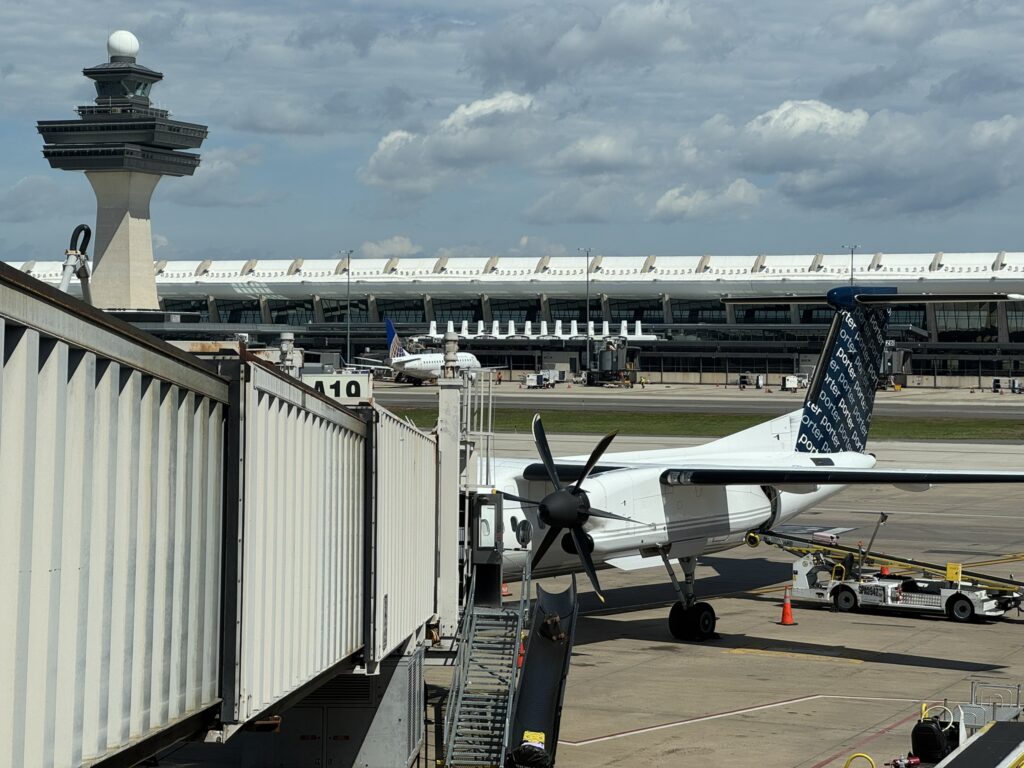 Passengers flying with a basic economy ticket must first stop at the check-in counter, though, as the airline requires a bag allowance verification unless they are a top tier loyalty member.
Passengers flying with a basic economy ticket must first stop at the check-in counter, though, as the airline requires a bag allowance verification unless they are a top tier loyalty member.
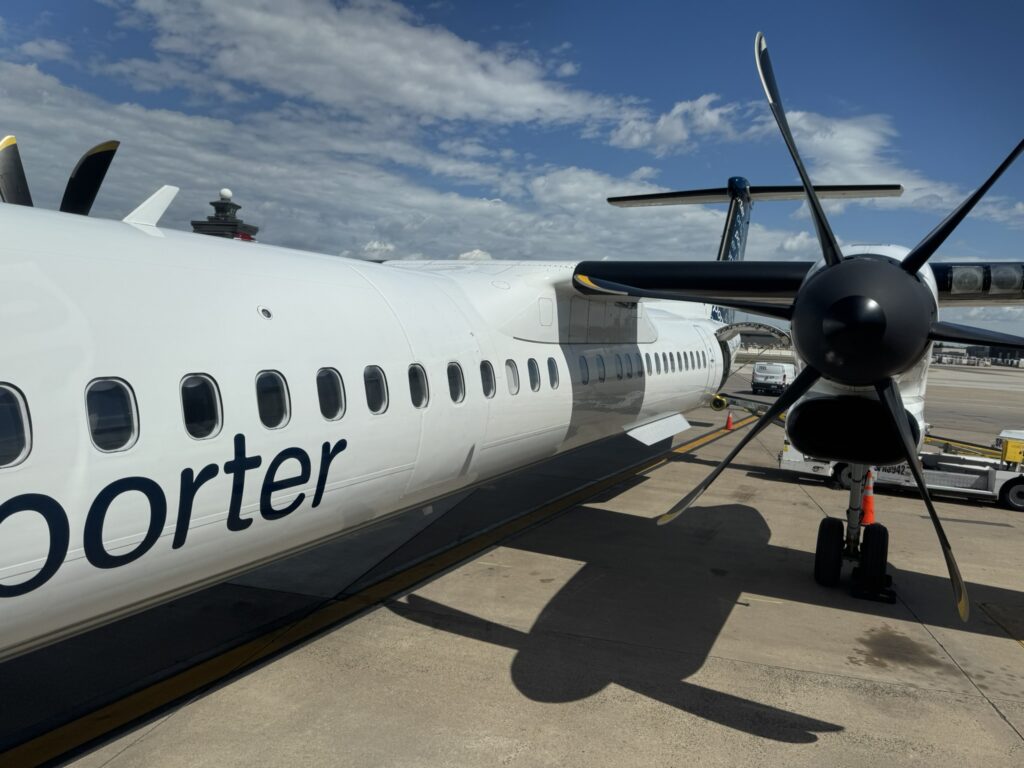 On board the Q400 I was suddenly reminded that the airline had replaced its seats and densified the cabin in the dark days of COVID recovery. Porter chose the TiSeat E2 from Expliseat, which ticks the box for being ultra-lightweight and ergo, more sustainable, but looks as bare bones as it feels on your rear-end.
On board the Q400 I was suddenly reminded that the airline had replaced its seats and densified the cabin in the dark days of COVID recovery. Porter chose the TiSeat E2 from Expliseat, which ticks the box for being ultra-lightweight and ergo, more sustainable, but looks as bare bones as it feels on your rear-end.
While I actually had no problem with the 30″ pitch and non-reclining nature of the seat, the seat padding was woefully inadequate. It seemed to be particularly weak at the back of the seat pan, right where most of my body weight ended up.
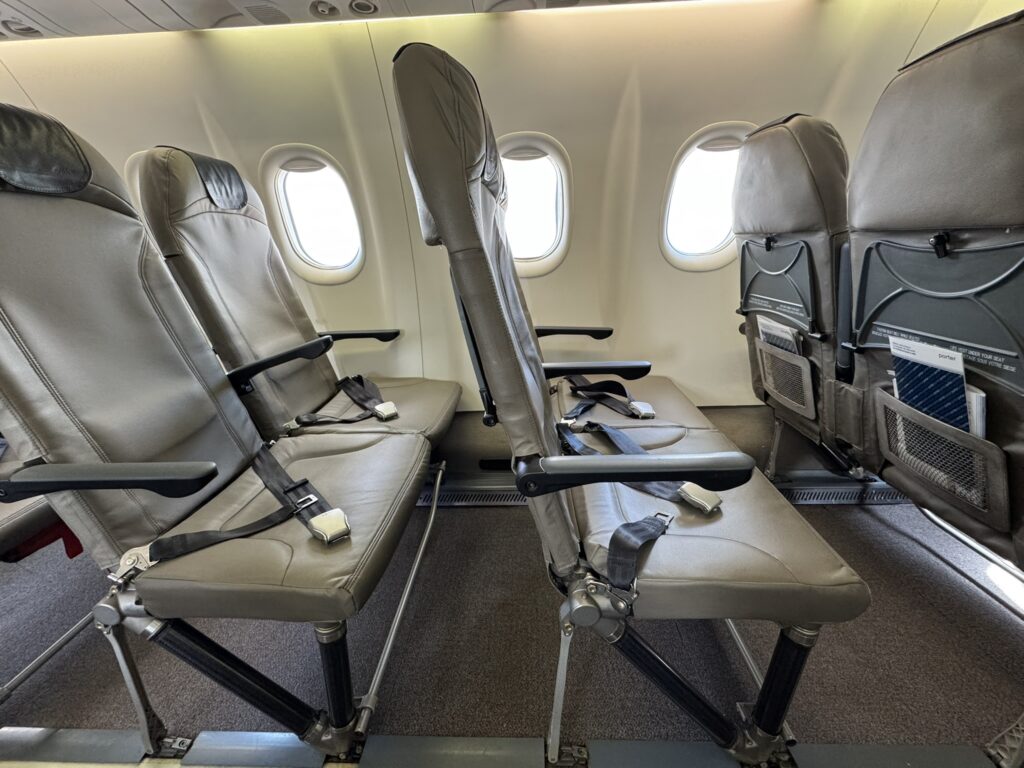 This experience might be fine for a short hop between Toronto and Montreal, but Porter operates the Q400 on some longer routes and I sure wouldn’t want to be on board one during a three-hour taxi out to the runway at Newark.
This experience might be fine for a short hop between Toronto and Montreal, but Porter operates the Q400 on some longer routes and I sure wouldn’t want to be on board one during a three-hour taxi out to the runway at Newark.
Beyond the seat, everything about the baseline Porter experience was as advertised.
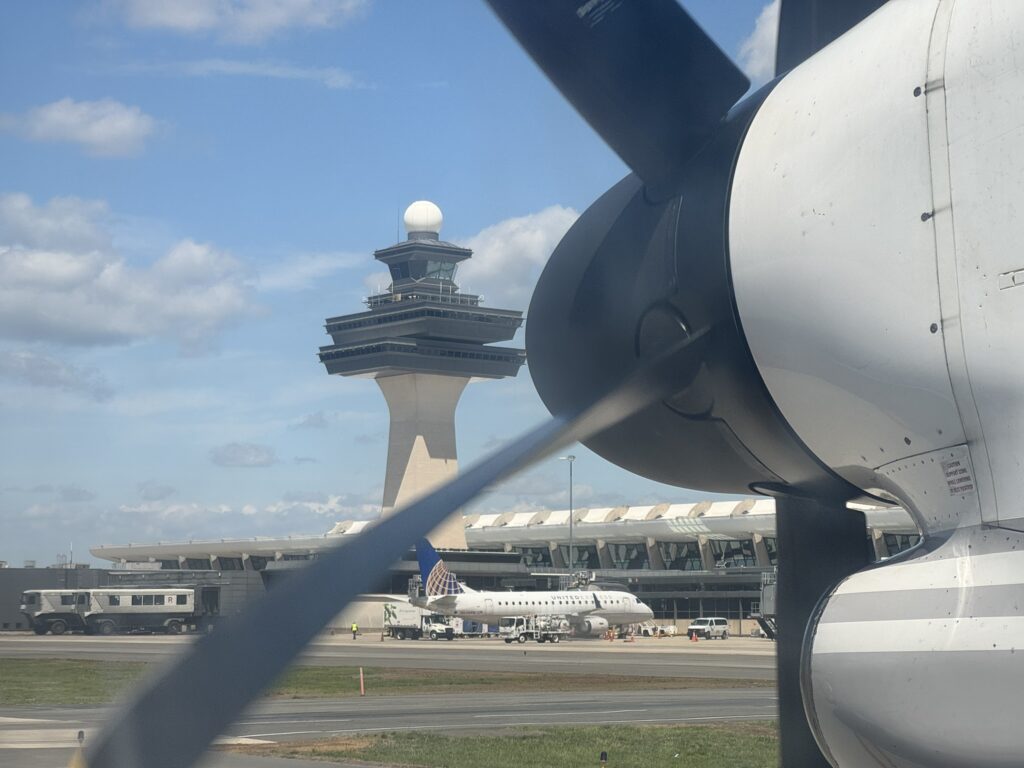 The crew members were exceptionally friendly and all passengers were offered a free snack and alcoholic beverages (though I did not partake on this morning flight). There’s really not much more to it.
The crew members were exceptionally friendly and all passengers were offered a free snack and alcoholic beverages (though I did not partake on this morning flight). There’s really not much more to it.
There is no Wi-Fi or streaming entertainment, nor are there power or USB outlets, though Porter does still print an inflight magazine.
The real benefit of the Q400 operation comes for those traveling in or out of the Billy Bishop Toronto City Airport hub.
If there’s a more convenient downtown airport, I haven’t been there.
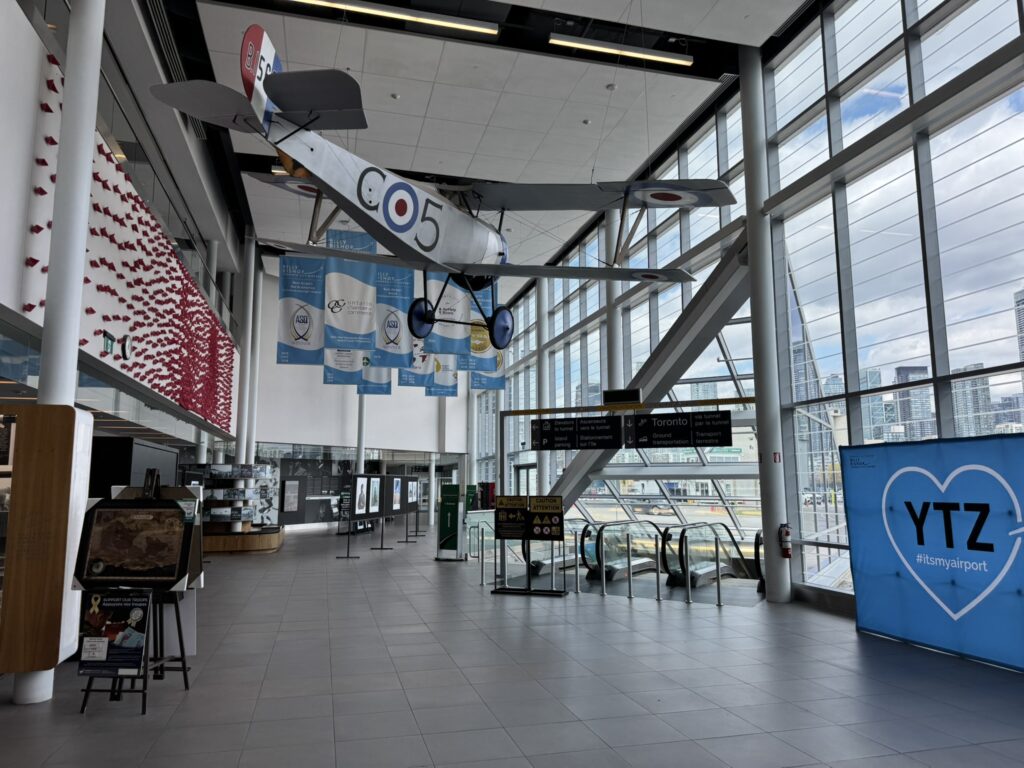 A quick walk through a pedestrian tunnel and passengers are presented with multiple options to reach the city.
A quick walk through a pedestrian tunnel and passengers are presented with multiple options to reach the city.
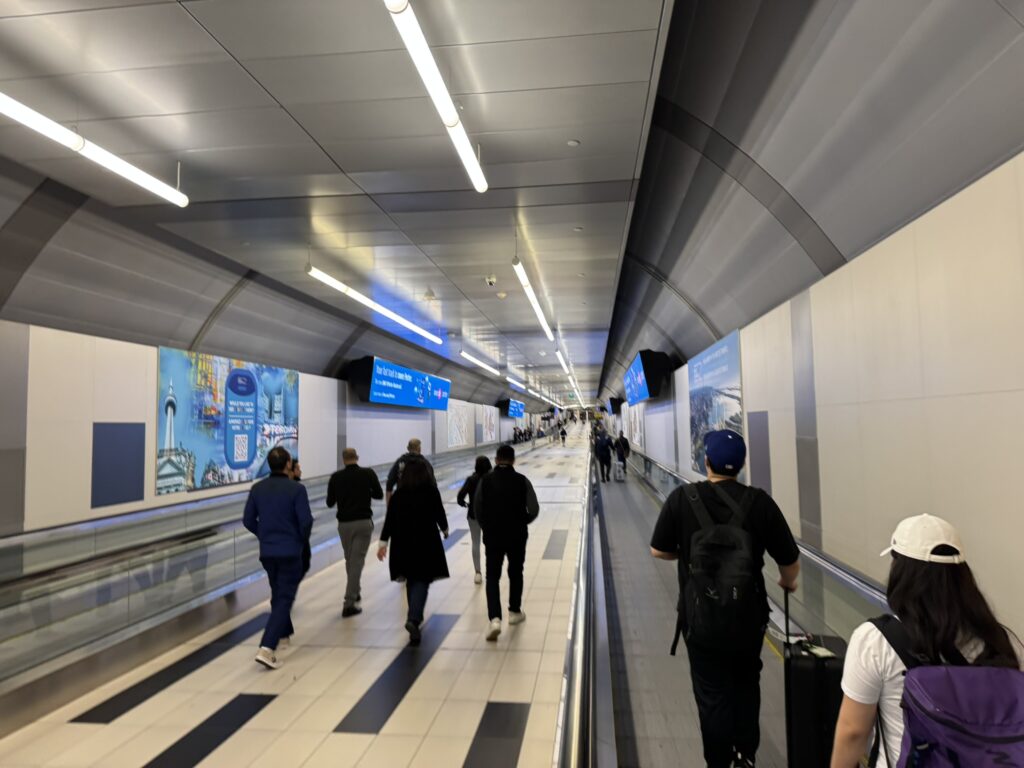 The airport authority operates a free shuttle service to Union Station, though Toronto’s streetcar network is just a few hundred feet away.
The airport authority operates a free shuttle service to Union Station, though Toronto’s streetcar network is just a few hundred feet away.
Passengers can also choose to simply walk, or even check out a bike from the city-wide bikeshare network.
Since Porter cannot operate its Embraer E195-E2 aircraft out of Billy Bishop airport, the airline has expanded to also operate out of Toronto Pearson. The transborder section of Terminal 3 is functional though not a place I’d wish to spend any more time in than necessary.
Boarding the E2 was like stepping on board a completely different airline.
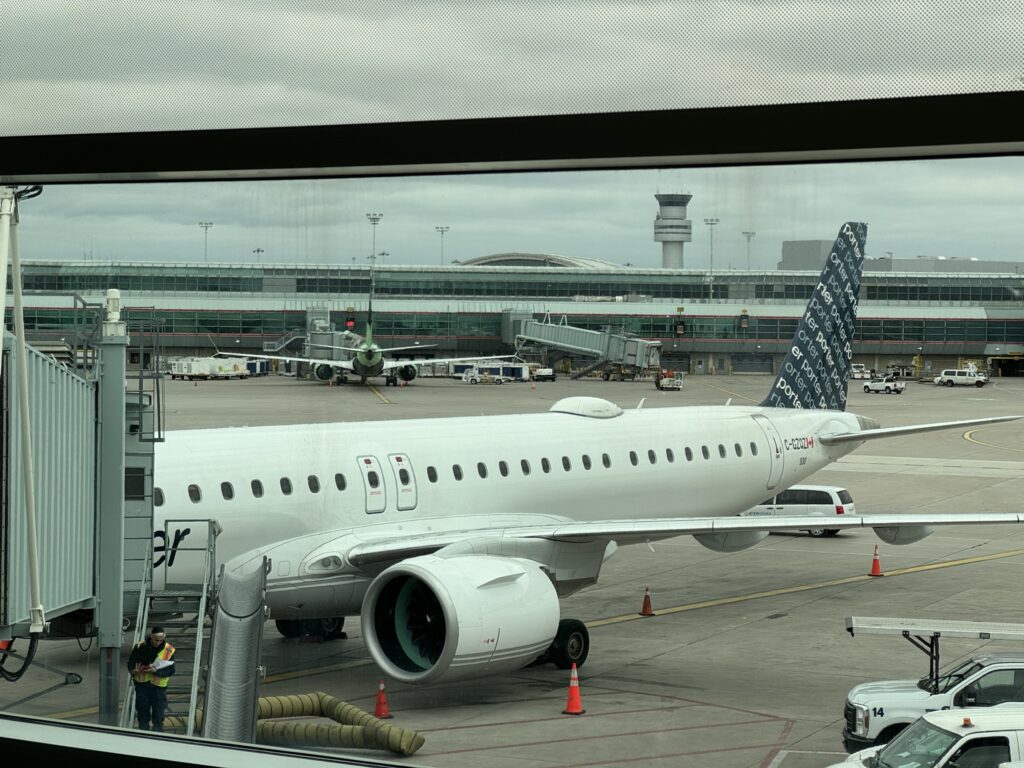 The overhead bins actually fit a regular sized bag while the seats have a splash of color and don’t look like a substitute for a park bench.
The overhead bins actually fit a regular sized bag while the seats have a splash of color and don’t look like a substitute for a park bench.
I opted to book Porter Reserve for the flight to LaGuardia just to experience it compared to the baseline experience. Reserve includes seats pitched at 36”, premium snacks and a meal on flights over 2.5 hours, as well as other perks such as two checked bags.
On this short flight, however, Reserve is not something I’d necessarily recommend.
With US immigration handled at Pearson I didn’t need the included expedited security since I have Global Entry. The premium snacks offered in Reserve were not worth the upsell, especially as Air Canada manages an actual meal service in Business Class on this short hop.
While the extra legroom was nice, that can be purchased separately with a Porter Stretch seat assignment. If the price was right for a longer flight I would absolutely consider the Porter Reserve option, but on this short flight the benefits were just not there when the base experience is so positive.
Whereas the Q400 offers a basic experience, the E195-E2 shines. All of the generously padded seats are equipped with an AC power outlet and every single row seemed to have a window where some rows on the Q400 do not.
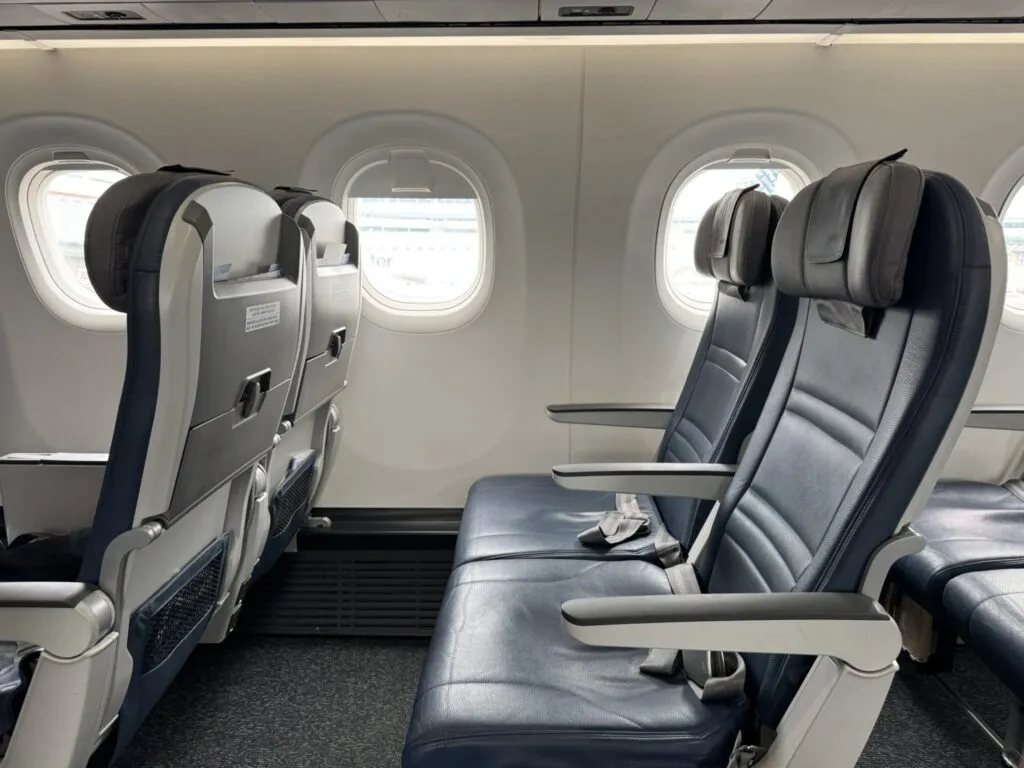 Porter also offers free Wi-Fi to VIPorter loyalty members, with the system powered by Viasat.
Porter also offers free Wi-Fi to VIPorter loyalty members, with the system powered by Viasat.
The inflight Internet performed as I have come to expect from Viasat, providing enough bandwidth to stream video content and browse social media but with a slight lag to everything due to the high latency of the firm’s Ka-band geostationary (GEO) satellite network.
The lag is perhaps more obvious to me now that Low Earth Orbit (LEO) and multi-orbit LEO/GEO IFC solutions are, respectively, rolling out at Porter competitors Air Canada and WestJet.
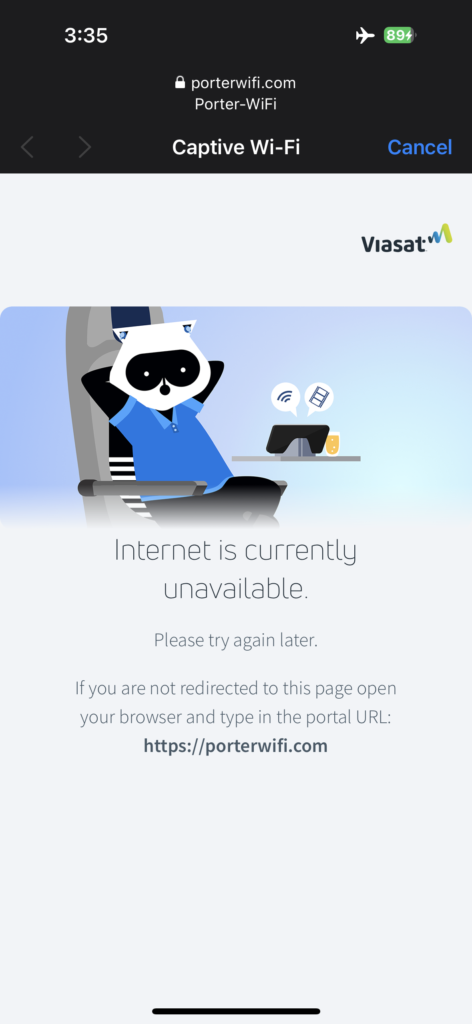 The IFC system on the E2 had to be reset mid-flight due to the connection dropping out, which now seems to happen quite a bit with Viasat.
The IFC system on the E2 had to be reset mid-flight due to the connection dropping out, which now seems to happen quite a bit with Viasat.
The one miss with the seat is its lack of a seatback personal device holder. While the tray table seems to have a groove in it for this purpose, it didn’t work for my phone and there is no means to prop up a phone or tablet in the seatback. This is a strange omission for Porter since these aircraft operate some lengthy transcon flights.
I really enjoyed my experience on Porter’s E195-E2. It’s comfortable, quiet, and a massive leap when compared to the airline’s Q400, though the latter could easily be given a glow up with more padding on the seats, and the addition of inflight connectivity.
I would absolutely look to book Porter again, even as a connecting option between New York and Vancouver.
 My one major complaint, as silly as it may be, is the lack of Mr. Porter imagery inside the actual aircraft. Porter embraces its raccoon mascot in its marketing and website, but I felt oddly disappointed to not see him inside the E2.
My one major complaint, as silly as it may be, is the lack of Mr. Porter imagery inside the actual aircraft. Porter embraces its raccoon mascot in its marketing and website, but I felt oddly disappointed to not see him inside the E2.
If this is Porter’s biggest problem, then it definitely has a good thing going.
- WestJet rolls out superfast Starlink with little fanfare
- Blazing fast Internet on an RJ? Air Canada stuns in free Wi-Fi rollout
- Intelsat multi-orbit IFC showdown: AC CRJ900 versus AA E175
- Air France goes industrial minimalist with new Expliseat seat for Hop
- A lot to like on Porter Airlines’ E2 YYZ-YVR flight
All images credited to the author, Jason Rabinowitz




